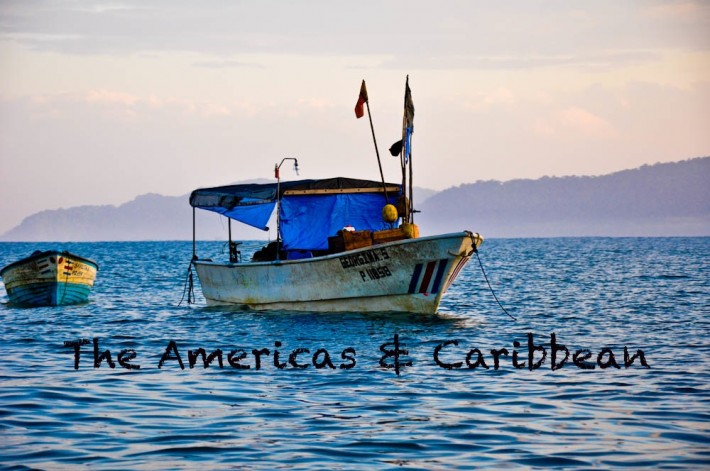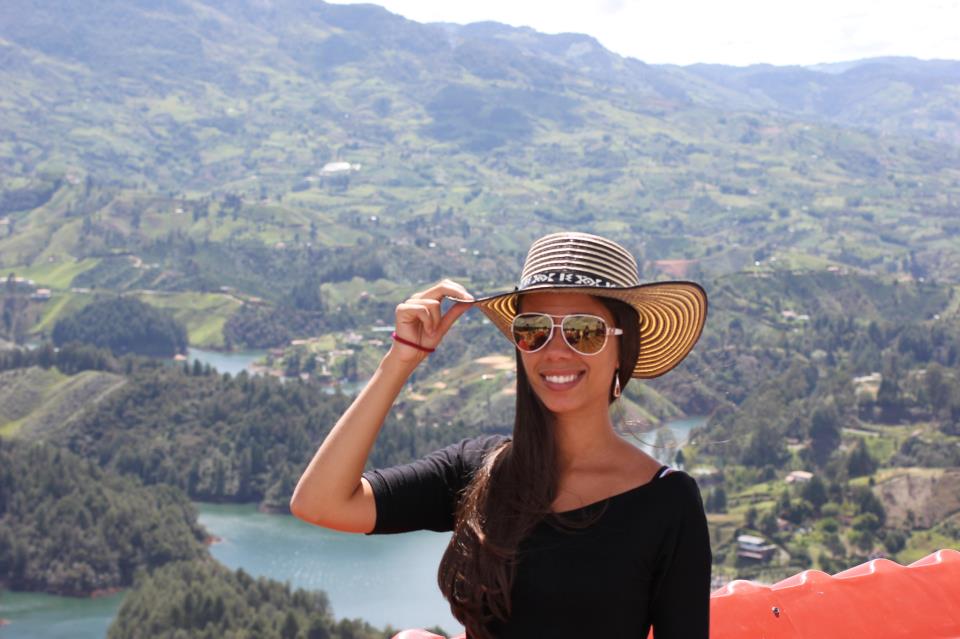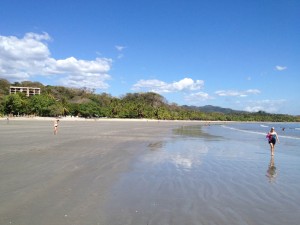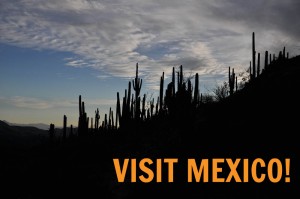We started this collaborative series taking a voyage around Asia, exploring popular destinations such as Thailand and the Philippines, and going to others less known yet very interesting, such as Kyrgyszstan. After Asia, we moved onto Africa & The Middle East to mingle with the locals, experience raw landscapes and wildlife, history and rich cuisines, in countries such as Djibouti, Mali, Uganda or Israel.
Before we take off to Europe, it’s now time to explore The Americas!
Click the links below to find out more about each country and the participating bloggers!
Colombia
I’ve been traveling and living abroad for since 2007, and Colombia is my favorite country in the world by far! Even though tourism is increasing dramatically, there are still a lot of under-visited destinations that the adventurous traveler can explore. Aside from natural diversity and a low costs, the people are amazing and very welcoming to visitors.
The city I enjoy the most is Medellin, the capital of Antioquia, where I live now. I also enjoy exploring small towns like Villa de Leyva and Mongüi in the Boyacá region and Jardín and Guatapé nearby Colombia. I recommend anyone visiting Colombia to try an arepa and a bandeja paisa.
By Jasmine from Jasmine Wanders
Dominica
Take it from me – adventure travellers and outdoor enthusiasts should definitely make the effort to discover lovely Dominica. For the past sixteen years, I’ve enjoyed hiking through its verdant mountains and pristine rainforest.
It’s been a real thrill to tackle the island-long Waitukubuli National Trail (WNT), which covers the diverse terrain of Dominica from the northern tip to its southernmost point-of-land. The WNT is 115 miles (184 kilometres) long and is broken up into fourteen segments of varied lengths and levels of difficulty that criss-cross the island. Everywhere, I have encountered unspoiled paradise: dense jungle; sparkling rivers; ancient Kalinago and Maroon traces; old plantation roads; fertile farms; sulphur springs; deserted shoreline. Sometimes the steep slopes and deep gorges are challenging to traverse, but I am content with the rewards: hidden waterfalls; spectacular views; rare flora and fauna, such as Dominica’s two endemic parrots, the Sisserou and the Jaco; and friendly people in nearby villages.
As a seasoned hiker, I have also taken on two of Dominica’s most feared and revered trails. It was an all-over work-out up and down Morne Diablotin, the island’s highest peak. Same thing for the famous and challenging Boiling Lake trail, which passes through the awesome Valley of Desolation, located in the heart of Morne Trois Pitons National Park, a UNESCO World Heritage Site.
It doesn’t always have to be difficult, though. I love the shorter and easier outings too: Freshwater and Boeri Lakes in the island’s interior; the Glassy Trail near Boetica in the southeast; the well-worn uphill ‘path’ to viewpoint at Gallion, near the Soufriere Sulphur Springs; ‘Jack’s Walk’ to the look-off above Roseau, the capital city; and hopping over red rocks near Point Baptiste on the dramatic northeast coast, among others.
By Gwenith from Ti Domnik Tales
Costa Rica
I came to Costa Rica for vacation, fell in love with the people and the wildlife, and decided to stay.
Most Costa Ricans are super friendly and pride themselves on being peaceful, as evidenced by the abolition of the military in 1948 and the way they lead their daily lives. They know how to live a happier and more tranquilo life and you can learn this trick, too, if you come with an open mind and take the time to listen.
The amazing wildlife is gorgeous and plentiful and the tropical climate allows you to live in an open-air house, year-round. You can drive 10 minutes in any direction and see the environment change. There are so many different exotic areas in Costa Rica that you could spend a lifetime exploring them all!
My favorite place is definitely Drake Bay and Corcovado National Park on the Osa Peninsula. You can find 10% of the entire world’s biodiversity on this tiny piece of earth – it’s like visiting Nature’s best theme park. It’s not very easy to get to, and once you are there you will have plenty of exploring to do, so plan at least 1 week for that adventure. Other faves include Santa Teresa on the Nicoya Peninsula, Cahuita and Punta Uva on the Caribbean coast, Irazu and Poas Volcanos, and the quaint towns in the mountains surrounding the Central Valley.
Also, make sure to try out the wide variety of tropical fruit! Cas is native to Costa Rica and delicious as a juice. Order a batido (smoothie) from any of the batido shops located on just about every corner. As far as meals go, stick with the chicken casado – it’s delicious, nutritious, and what Costa Ricans make best.
Pura vida!
By Erin from De La Pura Vida
Cuba
When people think ‘Cuba,’ what usually jumps to mind are cigars, old cars, world-class music and kick-ass mojitos. All of this is here, of course (in spades), but what truly inspires about this singular island can be boiled down to one word: Cubans. Daily, I’m stuffed with food for thought and my head aches with the new knowledge, sayings, slang, and idiosyncrasies shared by Cuban friends and family. And this after almost a decade in residence. Walking in the flip flops of a first time Cuba traveler trying to process all the complexities here (which is hard, even for Cubans), makes my head hurt, but also makes my heart swell when I imagine all the energetic and fun people they’ll meet.
Neruda-quoting bartenders; trilingual hustlers; octogenarian historians, and musical wunderkinds: diving into conversation with one of these or similarly well-versed, engaging, and opinionated locals never fails to enlighten and entertain. Cubans are also what are known as ‘tremendo jodedores,’ or incredible jokesters: from black humor to practical gags, Cubans make fun of everything: you, themselves, death, sex, the system (this last only if they know you well, usually). Sitting seaside with Cubans, a bottle of rum, something to smoke – here, tobacco isn’t the demon weed it is elsewhere – and endless topics for conversations will provide travel memories of a lifetime. Guaranteed.
The complexities, the ongoing changes, the humor, and the charm of the island and its residents mean that this, more than other destinations, provides a richer experience when you speak the language. You can hire or befriend someone to translate and more and more Cubans are learning English, so it’s not as if non-Spanish speakers won’t enjoy themselves. But Spanish speakers have more facility penetrating the Cuban reality and debunking myths.
Since there is so much mystery and misinformation out there about Cuba, I suggest this simple exercise for first time travelers: before touch down, write up a list of what you expect to see, hear, and experience in your adventures. As you explore and meet people, write down what you’re actually seeing, hearing, and experiencing. You may be surprised how your expectations do (or more likely, do not) measure up to the reality.
¡Buen viaje!
By Conner from Here Is Havana
Canada
Oh, Canada! Where do you begin exploring in a country where it takes days to drive from coast to coast?
With 10 provinces and 3 territories to choose from, there is a lot of ground to cover. You can drive the Cabot Trail in Nova Scotia, visit the home of Anne of Green Gables in Prince Edward Island, watch the tide roll in at the Hopewell Rocks in New Brunswick, practice your French in Quebec, be wowed by the Rockies in Alberta and British Columbia, head into the wilderness of Yukon, and so much more!
Another reason to come to Canada is the food! Let’s start with maple syrup; you can drizzle it over pancakes for breakfast, dunk your bacon in it, and maybe even order a maple flavoured coffee. For lunch, you can try a smoked meat sandwich with mustard on rye, and why not also get a generous order of poutine (french fries covered in gravy and mozzarella cheese) while you’re at it? If you’re looking for a snack, we have ketchup chips! What other country has that?
Lastly, if you want to feel a bit more Canadian during your visit, wear a plaid flannel shirt, put on a touque (that’s a beanie for the non-Canucks), and drop the occasional ‘eh’ at the end of every other sentence.
By Audrey from That Backpacker
Belize
It’s easy to fall in love with Belize
Belize is an English speaking country located just south of the Mexico’s Yucatan Peninsula in Central America. Belize is 8,867 square miles and for its small size the country offers endless adventures by air land and sea.
Belize is home to several magnificent Maya archaeological sites and a large portion of the country is designated as protected land. As a result, Belize offers incredible variety. Lush jungles, exotic tropical plants, hundreds of bird species, interesting animals, colorful coral, and countless fish make it the perfect place to experience Nat Geo moments.
Hope on a Tropic Air or Maya Island Air puddle jumper and within in 17 minutes you will land at one of the more popular destinations in Belize, Ambergris Caye. The Colorful, easy-going island, offers rich Caribbean history, delicious food, friendly people and the sight-seeing is fantastic.
You will find Hol Chan Marine Reserve and Shark Ray Alley to the south, combine this with a day sail and you can see Caye Caulker another popular island. Bacalar Chico National Park, a designated World Heritage site is at the north end of the island. Snorkeling and beach barbecue is a fun way to explore this area. Both sites are great places to see wildlife and are accessible by boat in roughly 20 minutes from town.
One last thing, the island is very community oriented. Local organizations can always use help in the form of donations or vacation volunteers and it is a great way to meet people. A few well known ones that can always use a helping hand are: San Pedro Belize Red Cross, Saga Humane Society and San Pedro Sailing Club. They teach kid form disadvantaged families to sail and are doing a remarkable job.
By Laurie from TacoGirl.com
Mexico
The Daily Magic of Mexico
“Excuse me señorita. Do you speak Spanish?”
I turned around to see an old weather-worn man beckoning to me from the entrance-way of a shop. I approached him cautiously, as any woman would approach a strange man calling to them in the street, but as I moved closer he gave me a comforting smile.
“Do you speak Spanish?” He asked me again as I got nearer, to which I replied that I did.
“Bueno entonces, good then I would like you to have these flowers”
Once again I hesitated, wondering what he wanted in return, what was the trick? Seeing my hesitation, he continued,
“I grew them in my garden and I sell them. I won’t sell any more tonight so I would rather give them to someone to enjoy than have them go to waste”
I was dumbstruck. This man who was clearly struggling to make ends meet, was so proud of his flowers and so sure of the pleasure that they could bring to people that he valued this pleasure over his own ability to make money. I reached out to take the flowers, the huge smile on my face matching the one on his and he gave me a little nod of satisfaction, before I thanked him and walked away with the beautiful smelling flowers in my hand and a heart swelling with joy at this little encounter. I turned back briefly, wondering if I should have offered some money, but the pride still beaming from the man’s face assured me I had done the right thing.
This was a pivotal moment for me, a moment when I realized that the little magic that happens, on a very regular basis in Mexico, is what makes me sure I don’t want to live anywhere else!
By Susannah from Mexico Retold
Dominican Republic
What makes the Dominican Republic so interesting is its diversity both in terms of culture and geography. Culturally the country is a mix of Spanish (the national language) from the original colonists from Spain, Tainos, the native peoples of the island who were mostly wiped out but managed to intermarry before that happened, and French African immigrants over the border from Haiti, the other country that shares the island of Hispaniola. These three influences create the cultural basis for the country whose primary influence is Spanish but has Taino words intermixed in the language, such as “habichuelas” for beans instead of the traditional word of “frioles”, Taino crafts, African painting styles, merengue music which spans both countries on the island and much much more. In addition to the founding influences, the Dominican Republic is a popular spot for Europeans, North and South Americans to visit and live. The result is that the Dominican Republic is a very cosmopolitan place with a lot to offer.
The geography of the Dominican Republic is equally diverse. The western part of the country, bordering Haiti has an arid, desert- like climate with cacti and even caymans. The highlight of this area is Barahona on the Southwest coast which has a beautiful smooth stone beach. On the Southeast coast, on the other hand is lush and wet with the waterfalls of El Limón, on the way to La Romana and the little town popular with Europeans, Bayahibe which borders on a national park. In the center of the country you have beautiful mountain towns such as Constanza and Jarabacoa with rapids you can raft on. And in the capital of Santo Dominigo, you will find a buzzing night life and the Colonial Zone, or Zona Colonial, which rivals Old San Juan in Puerto Rico.
If you just visit as a tourist, to places like Punta Cana or Puerto Plata, you will encounter all that the Caribbean has to offer — white sand beaches, lots of sun, turquoise water, but you won’t really experience the unique qualities of the country unless you venture off the beaten path.
By Eliza from Amor y Sabor
Where would you like to go today?
Further reads can take you to:
- Travel to my Country 1/4: Asia & Australia
- Travel to my Country 2/4: Africa & The Middle East
- Travel to my Country 4/4: Europe













I just finished reading through all the entries for The Americas & Caribbean. I really enjoyed my vicarious travels to other places – some familiar, so not so much (but more-so now!) from my desk in Dominica. Thanks to fellow contributors for making this journey so pleasurable! Gwen from Ti Domnik Tales
Gwen, thanks for introducing us to Dominica!
Personally, I knew NOTHING about it… but that’s the beauty of reading travel blogs and keep on finding new attractive places to go to! :)
Pingback: Why I Like to Hike on the Nature Island « Ti Domnik Tales
Pingback: Retelling Mexico | Mexico Retold
Pingback: Travel to my Country 4/4: Europe | Backpack Me
Nice concept, having local experts introducing their country. I’m especially a big fan of Cuba and the Dominican Republic. Although the people different, they’re both incredibly friendly and if you travel independently you’ll have some great personal experiences. I’ll check out their blogs.
Good job,
Frank (bbqboy)
Thanks Frank!
Locals (or almost locals in this case) always know best! :)
Pingback: Travel to my Country 2/4: Africa & The Middle-East | Backpack Me
Pingback: Travel to my Country 1/4: Asia & Australia | Backpack Me